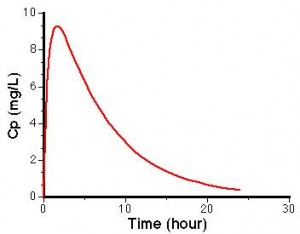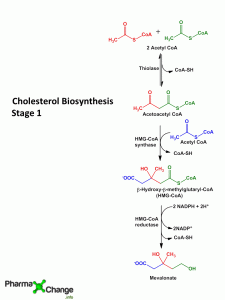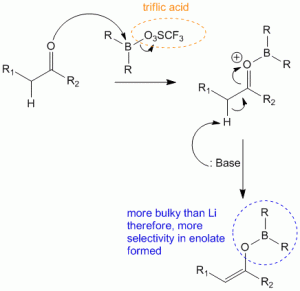Introduction
Amongst the various routes of drug delivery, oral route is the most preferred to the patient. However, disadvantages such as hepatic first pass metabolism and enzymatic degradation within the GI tract limits its use for certain drugs. Different absorptive mucosa are considered as potential site for drug administration. e.g. nasal, rectal, vaginal, ocular and oral cavity Noninvasive systemic administration. Local targeting / systemic drug delivery
These drug delivery system utilize property of bioadhesion of certain water soluble polymers which become adhesive on hydration and hence can be used for targeting particular site. Buccal delivery is the administration of the drug via buccal mucosa (lining of the cheek) to the systemic circulation.
Concepts of Buccal Drug Delivery System
Mucoadhesive polymers as drug delivery vehicles. The common principle underlying this drug administration route is the adhesion of the dosage form to the mucous layer until the polymer dissolves or the mucin replaces itself. Benefits for this route of drug administration are: prolonged drug delivery, targeted therapy and often improved bioavailability.
Bioadhesion and Mucoadhesion
Bioadhesion is the state in which two materials, (at least one of which is biological in nature), are held together for a extended period of time by interfacial forces. The term bioadhesion implies attachment of drug-carrier system to specific biological location. This biological surface can be epithelial tissue or the mucous coat on the surface of tissue.
If adhesive attachment is to mucous coat then phenomenon is referred as mucoadhesion. Mucoadhesion is defined as the interaction between a mucin surface and a synthetic or natural polymer. Mucoadhesion can also be explained on the basis of molecular interactions composed of attractive (Vander Waal’s, Hydrogen bonding) and repulsive forces (Electrostatic, steric). For mucoadhesion to occur, the attractive interaction should be more than repulsive forces.
Biological membrane- the membrane of internal tract e.g.-GIT, buccal cavity, eye, nose ,vagina ,rectum are covered with a thick gel like structure know as mucin. All biological formulation interact with mucin layer during process of attachement , it act as a link between the adhesive and the membrane.
Mucous is a network of mucin glycoprotein that form a continuous layer that intimately cover the internal tract of body. Total weight of mucous secreted by globlet cell only contain less then 5% of glycoprotein. There are about 160-200 oligosaccharides side chain in the glycosylated region of the glycoprotein. Each oligosaccharides unit have 8-10 monosaccharides and terminal end of either sialic acid and L-fucose. Mucin have network of negative charge due to sialic acid , sulfate residue
Mechanism of Bioadhesion
The bioadhesion mainly depends upon nature of bioadhesive polymer. First stage involves an intimate contact between a bioadhesive & a membrane. Second stage involves penetration of the bioadhesive into tissue. At physiological pH the mucous network may carry negative charge because of presence of sialic acid & sulfate residue and this high charge density due to negative charge contributes significantly to bioadhesion.
Types of Mucosa
- Buccal mucosa
- Esophageal mucosa
- Gastric mucosa
- Intestinal mucosa
- Nasal mucosa
- Olfactory mucosa
- Oral mucosa
- Bronchial mucosa
- Uterine mucosa
Anatomy & Physiology of Oral Mucosa
The oral cavity is lined by thick dense & multilayered mucous membrane of highly vascularized nature. Drug penetrating into the membrane passes through net of capillaries & arteries and reaches the systemic circulation.
There are mainly three functional zones of oral mucosa:-
- Masticatory mucosa :- Covers gingiva/ hard palate regions, keratinized epithelium
- Mucous secreting region :- Consist of soft palate, floor of mouth underside of tongue & buccal mucosa. this region shows non-keratinized mucosa.
- Specialized mucosa :- consist of lip border & dorsal surface of tongue with high selective keratinization
Oral Mucosa
mucous membranes / mucosae / singular mucosa :-
These are linings of mostly endodermal origin, covered in epithelium, which are involved in absorption and secretion. They line various body cavities that are exposed to the external environment and internal organs. It is at several places continuous with skin – at the nostrils, the lips, the ears, the genital area, and the anus. The sticky thick fluid secreted by the mucous membranes and gland is termed mucus. The term mucous membrane refers to where they are found in the body and not every mucous membrane secretes mucus.
Components of Oral Mucosa
- Epithelium
- Lamina propria
- Smooth muscle/ Muscularis mucosa/ GI tract
Epithelium: Measure 100 cm2. It is a protective surface layer.
Layer of stratified squamous epithelium consist of
- S . Distendum
- S . filamentosum
- S . suprabasale
Structure of Mucous Membrane
- Fibrous covering.
- Divided fibers of longitudinal muscular coat
- Transverse muscular fibers
- Submucous or areolar layer.
- Muscularis mucosae
- Mucous membrane with vessels and part of a lymphoid nodule
- Stratified epithelial lining
Average Epithelium Thickness in Various Parts:-
| Region | Average epithelial thickness (mm) |
| Skin (mammary region) | 100 – 120 |
| Hard palate | 250 |
| Buccal mucosa | 500 – 600 |
| Floor of mouth | 100 – 200 |
Advantages of Buccal Drug Delivery Systems
- Termination of therapy is possible
- Permits localization of drug to the oral cavity for extended period of time.
- Ease of administration
- Avoids first pass metabolism.
- Reduction in dose can be achieved, thereby reducing dose dependent side effects
- It allows local modification of tissue permeability, inhibition of protease activity or reduction in immunogenic response, thus selective use of therapeutic agents like peptides, proteins and ionized species can be achieved.
- Drugs which are unstable in acidic environment of stomach or destroyed by the alkaline environment of intestine can be given by this route
- Drugs which show poor bioavailability by oral route can be administered by this route
- It follows passive diffusion, and does not require any activation.
- The presence of saliva ensures large amount of water for dissolution of drug unlike in case of rectal and transdermal route.
- Drugs with short half life can be administered by this method. (2-8 hrs) e.g. :- nitroglycerine ( 2 hrs) isosorbide mononitrate ( 2-5 hrs)
- From the formulation point of view a thin mucin film exist on the surface of oral cavity.
- Provides opportunity to retain delivery system in contact with mucosa for prolonged period of time with the help of mucoadhesive compounds.
- The buccal membrane is sufficiently large to allow delivery system to be placed at different sites on the same membrane for different occasions, if the drug or other excipients cause reversible damage or irritate mucosa.
Disadvantages of Buccal Drug Delivery Systems
- Over hydration may lead to formation of slippery surface & structural integrity of the formulation may get disrupted by the swelling & hydration of the bioadhesive polymer.
- Eating and drinking may become restricted
- There is possibility that Patient may swallow the tablet
- The drug contained in swallowed saliva follows the per oral route & advantages of buccal route is lost.
- Only drug with small dose requirement can be administered.
- Drug which irritate mucosa or have a bitter or unpleasant taste or an obnoxious odour cannot be administered by this route
- Drugs which are unstable at buccal pH cannot be administered by this route.
- Only those drugs which are absorbed by passive diffusion can be administered by this route
Ideal Drug Candidates for Buccal Drug Delivery System
- Molecular size – 75-600 daltons
- Molecular weight between 200-500 daltons.
- Drug should be lipophilic or hydrophilic in nature.
- Stable at buccal pH.
- Taste – bland
- Drug should be odourless.
- Drugs which are absorbed only by passive diffusion should be used.
Permeability Enhancers
Permeability enhancers are substances added to pharmaceutical formulation in order to increase the membrane permeation rate or absorption rate of coadministered drug.
E.g. : By using di- and tri-hydroxy bile salts, the permeability of buccal mucosa to fluorescein isothiocynate (FITC) increased by 100-200 fold compared to FITC alone.
Applications – Enhance bioavailability of drugs – 5% – 40%
Limitations – May cause potential membrane damage.
Design of Buccal Dosage Form
Matrix Type
The Buccal patch designed in a matrix configuration contains drug, adhesive, and additives mixed together. Bi-directional patches release drug in both the mucosa and the mouth. The structure of the matrix type design is basically a mixture of the drug with the mucoadhesive matrix.
Reserviour Type
The buccal patch designed in a reservoir system contains a cavity for the drug and additives separate from the adhesive. Impermeable backing is applied to control the direction of drug delivery; to reduce patch deformation and disintegration while in the mouth; and to prevent drug loss
Buccal Mucoadhesive Dosage Forms
Three types based on their geometry
- single layer device with multidirectional release significant drug loss due to swallowing
- impermeable backing layer is superimposed preventing drug loss into the oral cavity
- unidirectional release device, drug loss is minimal achieved by coating every face except contact face
Buccal Formulations
Buccal Tablets
Most commonly investigated dosage form for Buccal drug. Tablets are small, flat, and oval, with a diameter of approximately 5–8 mm. Tablets can be applied to different sites in the oral cavity.
Drawback: Lack of physical flexibility, poor patient compliance
Buccal Patches
Laminates consisting of an impermeable backing layer, a drug-containing reservoir layer, a bioadhesive surface for mucosal attachment. Similar to those used in transdermal drug delivery. Backing layer control the direction of drug release, prevent drug loss, minimize deformation and disintegration
Buccal Films
Most recently developed dosage form for Buccal administration. Preferred over adhesive tablets in terms of flexibility and comfort. Flexible, elastic, and soft, yet adequately strong. Effective in oral disease.
Buccal Gels
Semisolid dosage forms, have the advantage of easy dispersion throughout the oral mucosa. May not be as accurate as from tablets, patches, or films. Poor retention of the gels at the site of application has been overcome by using bioadhesive formulations.
Marketed Products
Oral bioadhesive formulation
Corlan – hydrocartisone succinate
Bonjela – hypromellose
Taktarin – miconazole
Corsodyl – chlorohexidine
Buccal mucosa formulation
Buccaten – nausea , vomiting, virtigo
Suscard – angina
Sublingual formulation
GTN (Glycerin Trinitrate)
References
- Y.W. Chein, Novel Drug Delivery Systems, 2 nd edition, revised and expanded, Marcel Dekker, Inc. New York , 1992(pg. no. 195 – 224)
- N.K. Jain , Controlled and Novel drug delivery , CBS Publishers & Distributors, New Delhi, First edition 1997 (reprint in 2001)
- S.P. Visa and R.K.Khar, Controlled Drug Delivery, CBS Publishers & Distributors, New Delhi, First edition 1997.pg no. 259- 260




pls send it full lenght papar on my email i student of p.g in pharmaceutics invertis uni bareilly
I have wondered about the possibility of GHRP-2 having a molecular mass of 873 Dalton and a Molecular formula of C46H56N12O6 would work out this way, thoughts?